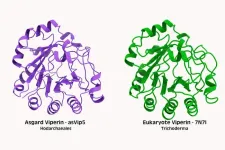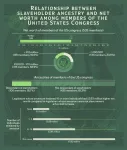(Press-News.org) When UC San Francisco research showed that routinely treating children in Sub-Saharan Africa with a common antibiotic could reduce deaths in children under five, the World Health Organization (WHO) moved quickly to recommend the treatment – but only for infants between 1 and 11 months old.
Now, UCSF researchers have shown that treating babies is not enough. The antibiotic must be given to all children up to 5 years old to realize its full benefit, which is considerable: It lowers child mortality by 14% in a region where 1 in 10 children die before they turn 5.
WHO recommended limiting use of the antibiotic, azithromycin, out of concerns that broader administration would give rise to antibiotic resistance. But the research shows that the youngest and most vulnerable children – those less than a year old – gain greater protection from respiratory and other potentially lethal infections if their older siblings also are treated, so they do not transmit these infections.
“The results are very clear,” said the study’s first author, Kieran S. O’Brien, PhD, MPH, an epidemiologist and assistant professor with the Francis I. Proctor Foundation at UCSF. “By treating the older kids you can protect the younger children, who are particularly vulnerable.”
The findings appear online Aug. 21 in the New England Journal of Medicine.
Concerns over antibiotic resistance
Azithromycin is a broad-spectrum antibiotic that works against a wide array of pathogens, including those responsible for respiratory infections, diarrhea and malaria, which are among the top causes of childhood mortality in Sub-Saharan Africa.
The initial 2018 study included nearly 200,000 children in three African countries: Niger, Malawi and Tanzania. The children were given a single dose of oral azithromycin or a placebo four times over two years.
This reduced under-five mortality by nearly 14% overall, and by 25% for babies who were less than 5 months old. And in 2020, the WHO endorsed mass administration of azithromycin to children under 1 year old. The research, however, had not demonstrated that just targeting infants would significantly reduce mortality.
In this newly published follow-up study, called AVENIR (Azithromycin pour la Vie des Enfants au Niger; Implementation and Recherche), the researchers tested the approach in different age groups to see if they could demonstrate its benefits by targeting infants alone.
The study, conducted in partnership with the Niger Ministry of Health and Centre de Recherche et Interventions en Santé Publique in Niger, repeated the same dose regimen, but was limited to just one country, Niger, which has higher child mortality rates than the other two countries in the original study.
They found that under-five mortality only went down significantly when all the children were treated.
Infants get exposed to pathogens at home
The researchers noted that most of the infants had older siblings in the household. These older children spend more time outside the household and play with other children, which increases the likelihood of infecting their younger, more vulnerable siblings.
The authors acknowledged that antibiotic resistance is a legitimate concern. But they stressed that the intervention is limited to a small subset of the population for just a few years, and the risk of resistance is outweighed by the opportunity to save lives.
Thomas M. Lietman, MD, the study’s senior author and an ophthalmologist at UCSF, hopes it will encourage the WHO to recommend the treatment for children up to 5 years old.
“We’re taught in medicine to avoid using antibiotics in a nonspecific way because of the potential for antibiotic resistance; but we’ve found if you do that in an organized fashion, it can reduce childhood mortality,” said Lietman, who was the lead author of the initial study. “How can you withhold a treatment that reduces mortality by 14% in areas where 10% of the kids aren't reaching their fifth birthday?”
Authors: Ahmed Arzika, M.Sc., of Centre de Recherche et Interventions en Santé Publique in Niger served as the additional co-first author of the study, and Abdou Amza, MD, of the Programme Nationale de Santé Oculaire in Niger was the other senior author. Additional UCSF co-authors include Elodie Lebas, RN, Brittany Peterson, MPH, Zijun Liu, MS, Victoria Le, MPH, Emily Colby, BA, Thuy Doan, PhD, Jeremy D. Keenan, MD, MPH, Catherine Oldenburg, Sc.D, MPH, Travis C. Porco, PhD, and Benjamin F. Arnold, PhD, MPH. Additional co-authors from Niger include Ramatou Maliki, M.Sc., Bawa Aichatou, B.Sc., Ismael Mamane Bello, M.Sc. Diallo Beidi, B.Sc., Nasser Galo, MD, Naser Harouna, MD, Alio M. Karamba, MD, Sani Mahamadou, M.Sc., Moustapha Abarchi, M.Sc., and Almou Ibrahim, MD.
Funding: The Bill & Melinda Gates Foundation (OPP1210548 and INV-002454), with antibiotic donated by Pfizer Inc.
About UCSF: The University of California, San Francisco (UCSF) is exclusively focused on the health sciences and is dedicated to promoting health worldwide through advanced biomedical research, graduate-level education in the life sciences and health professions, and excellence in patient care. UCSF Health, which serves as UCSF's primary academic medical center, includes top-ranked specialty hospitals and other clinical programs, and has affiliations throughout the Bay Area. UCSF School of Medicine also has a regional campus in Fresno. Learn more at ucsf.edu, or see our Fact Sheet.
###
Follow UCSF
ucsf.edu | Facebook.com/ucsf | YouTube.com/ucsf
END
Giving an antibiotic to all children under 5 in Africa saves lives
A new UCSF-led study suggests international guidance released in 2020 needs to be expanded beyond infants to be effective.
2024-08-21
ELSE PRESS RELEASES FROM THIS DATE:
Pivotal study supports belzutifan approval for patients with advanced kidney cancer
2024-08-21
RESEARCH SUMMARY
Study Title: Belzutifan Versus Everolimus for Advanced Renal-Cell Carcinoma
Publication: New England Journal of Medicine, August 22, 2024
Dana-Farber Cancer Institute authors: Toni K. Choueiri, MD
Summary: The LITESPARK-005 phase 3 clinical enrolled 746 patients with metastatic clear cell renal cell carcinoma (ccRCC) who had progressed after treatment with both an immune checkpoint inhibitor (ICI) and an anti-angiogenic therapy. Patients were randomized to receive treatment with either belzutifan, a HIF-2α inhibitor, or everolimus. Overabundant HIF-2α is associated with increased cancer-driving activity. At the second interim analysis of this study, ...
Next time you beat a virus, thank your microbial ancestors
2024-08-21
When you get infected with a virus, some of the first weapons your body deploys to fight it were passed down to us from our microbial ancestors billions of years ago. According to new research from The University of Texas at Austin, two key elements of our innate immune system came from a group of microbes called Asgard archaea.
Specifically, viperins and argonautes, two proteins that are known to play important roles in the immune systems of all complex life — from insects to plants to humans — came from the Asgard archaea. Versions of these defense proteins are also present in bacteria, but the versions in complex life forms are ...
Two UCSB professors selected by the Gordon and Betty Moore Foundation to be Experimental Physics Investigators
2024-08-21
(Santa Barbara, Calif.) — UC Santa Barbara professors Andrew Jayich and Jon Schuller have been selected by the Gordon and Betty Moore Foundation to be part of the 2024 cohort of Experimental Physics Investigators. They join 17 other mid-career researchers from around the country, each receiving a five-year, $1.25 million grant to pursue research goals.
“This initiative is designed to support novel and potentially high-payoff projects that will advance the field of physics but might be hard to fund through traditional funding sources,” said Theodore ...
Study of pythons could lead to new therapies for heart disease, other illnesses
2024-08-21
In the first 24 hours after a python devours its massive prey, its heart grows 25%, its cardiac tissue softens dramatically, and the organ squeezes harder and harder to more than double its pulse. Meanwhile, a vast collection of specialized genes kicks into action to help boost the snake’s metabolism fortyfold. Two weeks later, after its feast has been digested, all systems return to normal—its heart remaining just slightly larger, and even stronger, than before.
This extraordinary process, described by CU Boulder researchers this week in the journal PNAS, could ultimately inspire novel treatments for a common human heart condition called cardiac fibrosis, in which ...
Study finds no link between migraine and Parkinson’s disease
2024-08-21
EMBARGOED FOR RELEASE UNTIL 4 P.M. ET, WEDNESDAY, AUGUST 21, 2024
MINNEAPOLIS – Contrary to previous research, a new study of female participants finds no link between migraine and the risk of developing Parkinson’s disease. The study is published in the August 21, 2024, online issue of Neurology®, the medical journal of the American Academy of Neurology.
“These results are reassuring for women who have migraine, which itself causes many burdens, that they don’t have to worry about an increased risk ...
How personality traits might interact to affect self-control
2024-08-21
Neuroticism may moderate the relationship between certain personality traits and self-control, and the interaction effects appear to differ by the type of self-control, according to a study published August 21, 2024 in the open-access journal PLOS ONE by Fredrik Nilsen from the University of Oslo and the Norwegian Defence University, Norway, and colleagues.
Self-control is important for mental and physical health, and certain personality traits are linked to the trait. Previous studies suggest that conscientiousness and extraversion enhance self-control, whereas neuroticism hampers it. However, the link between personality ...
US Congress members’ wealth statistically linked with ancestors’ slaveholding practices
2024-08-21
Per a new study, as of April 2021, US Congress members whose ancestors enslaved 16 or more people had a net worth that was five times higher than that of legislators whose ancestors did not have slaves. Neil Sehgal of the University of Pennsylvania, US, and Ashwini Sehgal of Case Western Reserve University, US present these findings in the open-access journal PLOS ONE on August 21, 2024.
Prior research has linked slavery’s intergenerational effects to contemporary inequality, poverty, education, voting behavior, and life expectancy in the US However, the extent to which past slavery in the US contributes to today’s social and economic conditions remains ...
Following a Mediterranean diet may be associated with reduced risk of COVID-19 infection, per systematic review
2024-08-21
Following a Mediterranean diet may be associated with reduced risk of COVID-19 infection, per systematic review, although it's unclear if the diet is also associated with reduced symptoms and severity of illness.
####
Article URL: https://journals.plos.org/plosone/article?id=10.1371/journal.pone.0301564
Article Title: Relevance of Mediterranean diet as a nutritional strategy in diminishing COVID-19 risk: A systematic review
Author Countries: Indonesia
Funding: The author(s) received no specific funding for this work. END ...
Homicide rates are a major factor in the gap between Black and White life expectancy
2024-08-21
Homicide is a major reason behind lower and more variable reduction in life expectancy for Black rather than White men in recent years, according to a new study published August 21, 2024 in the open-access journal PLOS ONE by Michael Light and Karl Vachuska of the University of Wisconsin-Madison, USA.
The COVID-19 pandemic precipitated a staggering drop in U.S. life expectancy and substantially widened Black-White disparities in lifespan. It also coincided with the largest one-year increase in the U.S. homicide rate in more than a century, with Black men bearing the brunt of these. Despite these trends, there has been limited research on the contribution ...
Human-wildlife overlap expected to increase across more than half of land on Earth by 2070
2024-08-21
ANN ARBOR—As the human population grows, more than half of Earth's land will experience an increasing overlap between humans and animals by 2070, according to a University of Michigan study.
Greater human-wildlife overlap could lead to more conflict between people and animals, say the U-M researchers. But understanding where the overlap is likely to occur—and which animals are likely to interact with humans in specific areas—will be crucial information for urban planners, conservationists and countries that have pledged international conservation commitments. Their findings ...
LAST 30 PRESS RELEASES:
Tracing the quick synthesis of an industrially important catalyst
New software sheds light on cancer’s hidden genetic networks
UT Health San Antonio awarded $3 million in CPRIT grants to bolster cancer research and prevention efforts in South Texas
Third symposium spotlights global challenge of new contaminants in China’s fight against pollution
From straw to soil harmony: International team reveals how biochar supercharges carbon-smart farming
Myeloma: How AI is redrawing the map of cancer care
Manhattan E. Charurat, Ph.D., MHS invested as the Homer and Martha Gudelsky Distinguished Professor in Medicine at the University of Maryland School of Medicine
Insilico Medicine’s Pharma.AI Q4 Winter Launch Recap: Revolutionizing drug discovery with cutting-edge AI innovations, accelerating the path to pharmaceutical superintelligence
Nanoplastics have diet-dependent impacts on digestive system health
Brain neuron death occurs throughout life and increases with age, a natural human protein drug may halt neuron death in Alzheimer’s disease
SPIE and CLP announce the recipients of the 2025 Advanced Photonics Young Innovator Award
Lessons from the Caldor Fire’s Christmas Valley ‘Miracle’
Ant societies rose by trading individual protection for collective power
Research reveals how ancient viral DNA shapes early embryonic development
A molecular gatekeeper that controls protein synthesis
New ‘cloaking device’ concept to shield sensitive tech from magnetic fields
Researchers show impact of mountain building and climate change on alpine biodiversity
Study models the transition from Neanderthals to modern humans in Europe
University of Phoenix College of Doctoral Studies releases white paper on AI-driven skilling to reduce burnout and restore worker autonomy
AIs fail at the game of visual “telephone”
The levers for a sustainable food system
Potential changes in US homelessness by ending federal support for housing first programs
Vulnerability of large language models to prompt injection when providing medical advice
Researchers develop new system for high-energy-density, long-life, multi-electron transfer bromine-based flow batteries
Ending federal support for housing first programs could increase U.S. homelessness by 5% in one year, new JAMA study finds
New research uncovers molecular ‘safety switch’ shielding cancers from immune attack
Bacteria resisting viral infection can still sink carbon to ocean floor
Younger biological age may increase depression risk in older women during COVID-19
Bharat Innovates 2026 National Basecamp Showcases India’s Most Promising Deep-Tech Ventures
Here’s what determines whether your income level rises or falls
[Press-News.org] Giving an antibiotic to all children under 5 in Africa saves livesA new UCSF-led study suggests international guidance released in 2020 needs to be expanded beyond infants to be effective.




